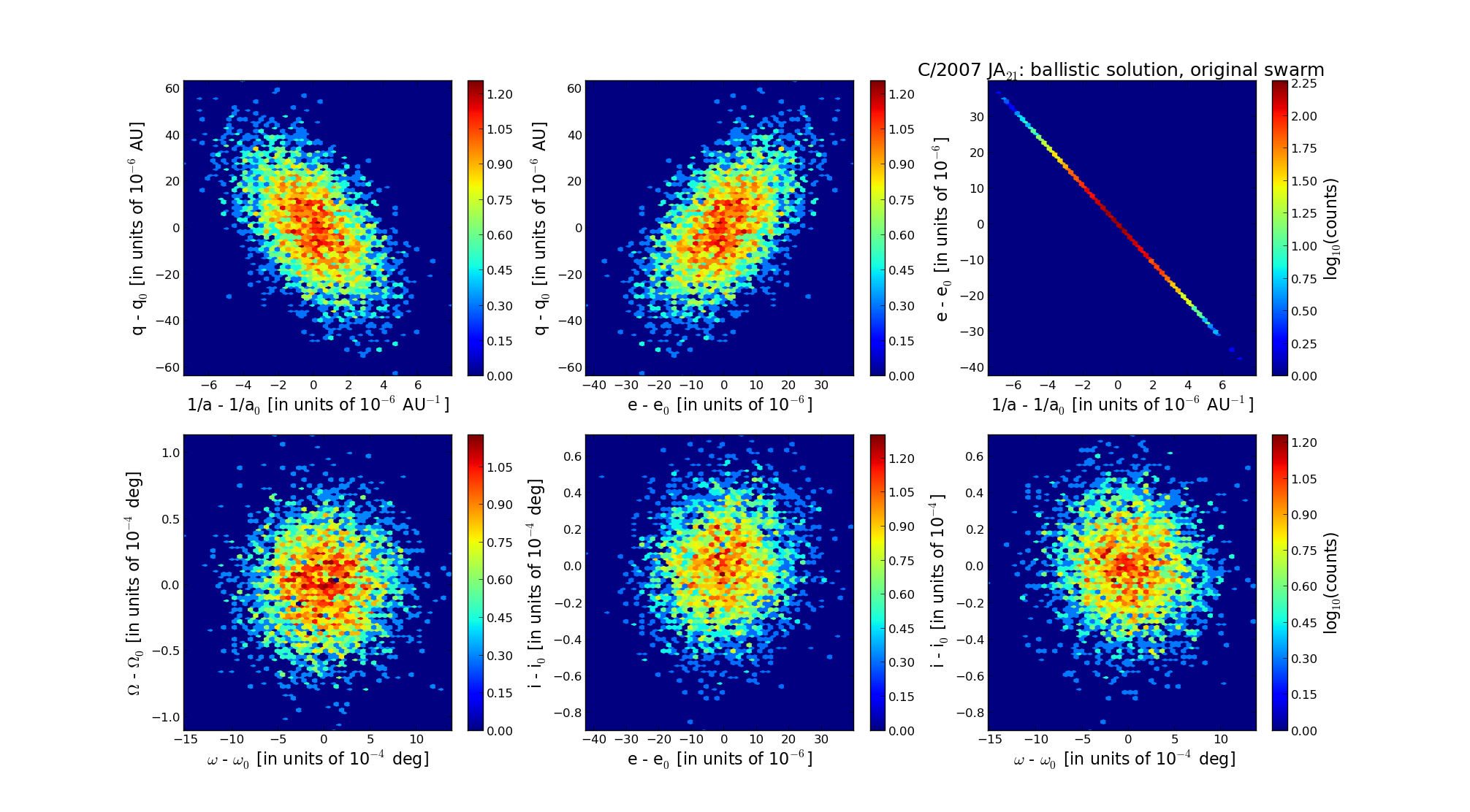| Solar System Dynamics & Planetology Group |
 |
C/2007 JA21 LINEAR |  |
| Solar System Dynamics & Planetology Group |
 |
C/2007 JA21 LINEAR |  |
| number of observations | 174 |
| number of residuals | 342 |
| data interval | 2007 May 11 — 2008 Aug. 27 |
| rms [arcsec] | 0.47 |
| orbit quality class | 1a |
| Epoch (TT) | 20061101.0 | = JD 2454040.5 |
| time of perihelion passage (TT) | 20061114.373398 | ± 0.003150 |
| perihelion distance | 5.36815179 | ± 0.00001740 |
| eccentricity | 1.00230714 | ± 0.00001092 |
| argument of perihelion [deg] | 93.697721 | ± 0.000388 |
| longitude of the ascending node [deg] | 65.522369 | ± 0.000030 |
| inclination [deg] | 89.840317 | ± 0.000022 |
| inverse semimajor axis [10-6 au-1] | -429.78 | ± 2.03 |

| Epoch (TT) | 17000419 | |
| time of perihelion passage (TT) | 20061115.586363 | ± 0.003223 |
| perihelion distance | 5.36590022 | ± 0.00001785 |
| eccentricity | 0.99965064 | ± 0.00001073 |
| argument of perihelion [deg] | 93.783567 | ± 0.000393 |
| longitude of the ascending node [deg] | 65.483271 | ± 0.000030 |
| inclination [deg] | 89.879449 | ± 0.000022 |
| inverse semimajor axis [10-6 au-1] | 65.11 | ± 2.00 |
| Epoch (TT) | 23120630 | |
| time of perihelion passage (TT) | 20061115.447846 | ± 0.003187 |
| perihelion distance | 5.36244677 | ± 0.00001766 |
| eccentricity | 1.00004874 | ± 0.00001072 |
| argument of perihelion [deg] | 93.664982 | ± 0.000396 |
| longitude of the ascending node [deg] | 65.497273 | ± 0.000030 |
| inclination [deg] | 89.861157 | ± 0.000022 |
| inverse semimajor axis [10-6 au-1] | -9.09 | ± 2.00 |